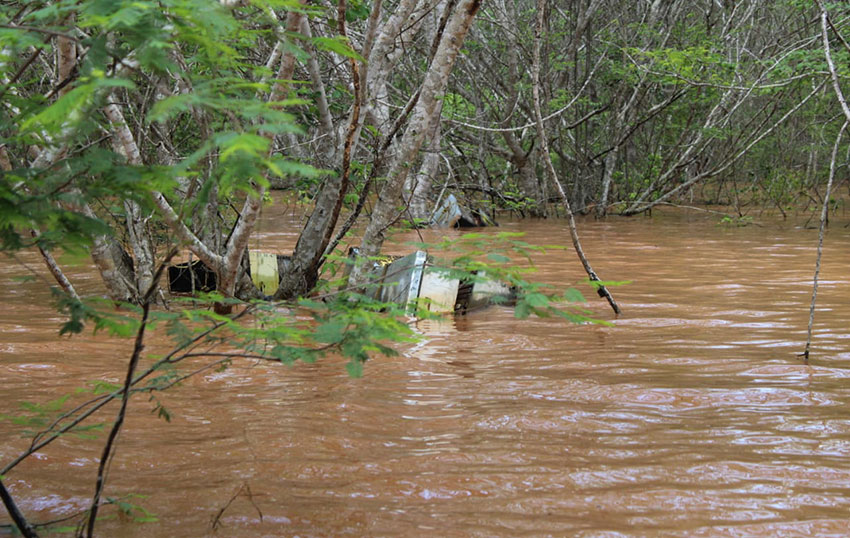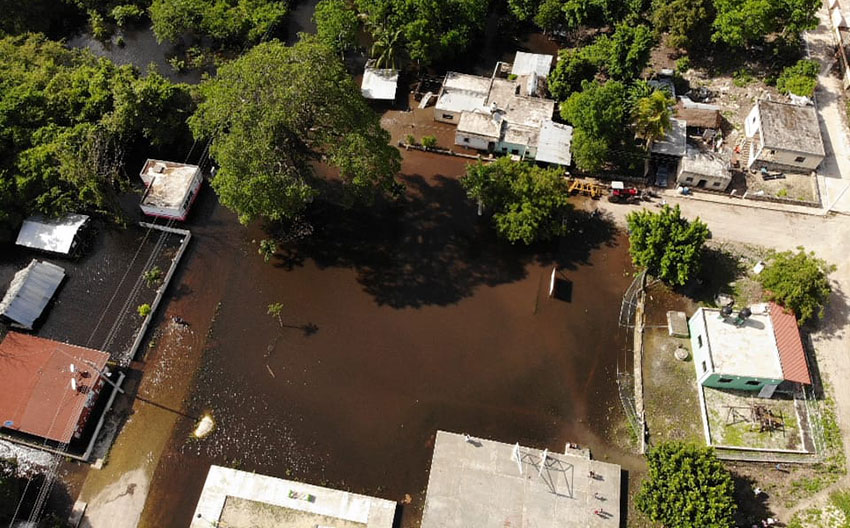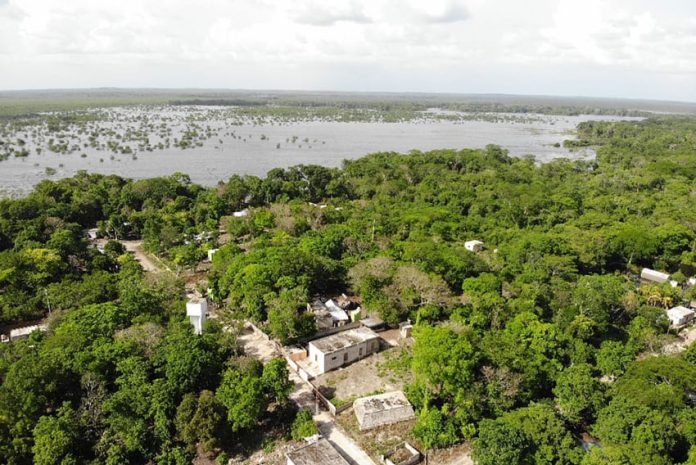On June 1, Tropical Storm Cristóbal made landfall on the Yucatán Peninsula, bringing with it torrential rain that caused major flooding in dozens of Maya communities across the region.
Settling over Campeche, Quintana Roo, and Yucatán state, the deluge destroyed crops and beehives, killed livestock, and forced people to evacuate.
Twenty-nine-year-old Everardo Chablé Huehuet – a representative of the Colectivo de Comunidades Mayas de los Chenes, a group of beekeeping and agricultural communities in Campeche – told Mexico News Daily that his community had been badly affected by the flooding.
“When the storm started and the rains began, we didn’t know that it was going to be a catastrophe, like a hurricane. It was raining for a week but we couldn’t imagine that we were going to be inundated and have areas that formed like lakes,” he said.
More than two months later and communities like Chablé’s are still struggling in the aftermath of this regional disaster.
The municipalities to receive the highest amount of rainfall in Campeche included Candelaria, Ciudad del Carmen, Calakmul, and Hopelchén, where Chablé lives.
Some 70% of people in the Hopelchén municipality make their living from beekeeping. They manage native stingless species and practice apiculture, the management of European honey bees.
Many people in Chablé’s town of Chan-Chen, which is a community of apiculturists more than 100 kilometers from the municipal capital of Hopelchén, lost their livelihoods.
“There are people who lost more than 100 hives, and there are people who lost 20. A large amount has been lost and it is so difficult to recover [the hives]. People have been working for years as beekeepers, for 20, 15, and 10 years they have worked, and then they lost their hives overnight,” he said.
The beekeeper explained that as the honey was due to be harvested, many people suddenly lost their income and are now struggling to pay for day-to-day expenses.
Chablé noted that there are towns in other communities where as many as 600 beehives were destroyed.

In early June, a group of 71 civil society organizations and academics carried out a preliminary investigation across the peninsula for a damage assessment and needs analysis.
It found that 4,259 hives had been lost in Campeche; there were 14,748 before the storm.
Reliant upon growing traditional crops on small family plots known as milpas, Maya communities in Hopelchén also suffered a heavy loss of squash plants.
Chablé explained that this loss was compounded by the fact that water ruined the communities’ corn harvest when it flooded the trojes, small traditional wooden structures used to store the corn.
Communities in Quintana Roo have also suffered because of Cristóbal.
The damage report indicated that areas that were badly impacted included José María Morelos, portions of Felipe Carrillo Puerto, Tulum, Puerto Morelos, Benito Juárez and Lázaro Cárdenas, and communities west of Bacalar.
Isaí Castillo Hernández, 29, lives in the small rural community of David Gustavo Gutiérrez Ruiz, which is located about 50 kilometers west of Bacalar in the municipality of Othon P. Blanco.
Castillo said: “I think what impacted us the most about this storm was the loss of our crops. There was serious damage. Many people who had crops such as corn, lemon, orange and other types of fruit trees lost absolutely everything.
“My grandfather, for example, had a large cornfield but when the flood came everything went into the water. All was lost with the water. We tried to recover some orange plants but nothing could be done.
“Some people also lost animals, such as sheep and cows, chickens, pigs, and turkeys, on their ranches.”
The access road to David Gustavo Gutiérrez Ruiz was washed away by the rains. Castillo explained that when a pregnant woman urgently needed medical care, the government had to send a helicopter to take her to hospital.
The community has received support from the government in the form of food packages, while in Hopelchén basic necessities and medicine have been handed out by civil society groups.

According to the damage study, the situation facing Maya beekeeping and agricultural communities impacted by the floods is urgent because any savings or resources families had were exhausted by the coronavirus pandemic. When the assessment was carried out, at least 15% of families in those communities urgently needed food support.
In Gustavo Gutiérrez Ruiz, many people who were working in tourism and providing a much-needed income for their families had lost their jobs because of the pandemic.
Chablé also said that the situation is complicated by the Covid-19 crisis, with cases rising in Hopelchén.
“Infections are going up very fast. We are talking about a figure of 100 infected people here in Hopelchén, when at the beginning of the end of May there were only two. It is worrying for the communities because they do not have a working Covid-19 protocol,” he said.
He added that it was a concern for communities because they lack adequate information about the virus in their native Yucatec Maya language.
As well as being impacted by flooding and Covid-19, Maya communities in the peninsula are facing environmental threats, one of which might have worsened the effects of the flooding.
According to a 2015 study, Hopelchén is a major deforestation hotspot on the peninsula because of the recent expansion of commercial agriculture, particularly by Mennonite communities.
Chablé suggested that the flooding was particularly severe as a result.
“We have never seen flooding like this before. Hurricane Isidoro happened 18 years ago here in Hopelchén and there were floods, but not like this. We are not talking about a hurricane, but about a storm that has impacted us with the force of a hurricane,” he said.
For Chan-Chen, David Gustavo Gutiérrez Ruiz and other affected communities, recovery from the floods is likely to be slow.
Castillo explained that until the water has fully receded, people in his community cannot return to their daily activities.
Chablé said that in Hopelchén they are also waiting for the water to go down — it has only abated by a few centimeters due to the rainy season.
The beekeeper added that residents believe it could take up to a year for the water to recede completely.
Mexico News Daily
